Home>diy>Building & Construction>What Effect Would The Construction Of Dams On Major River Systems Have On The Coastal Environment
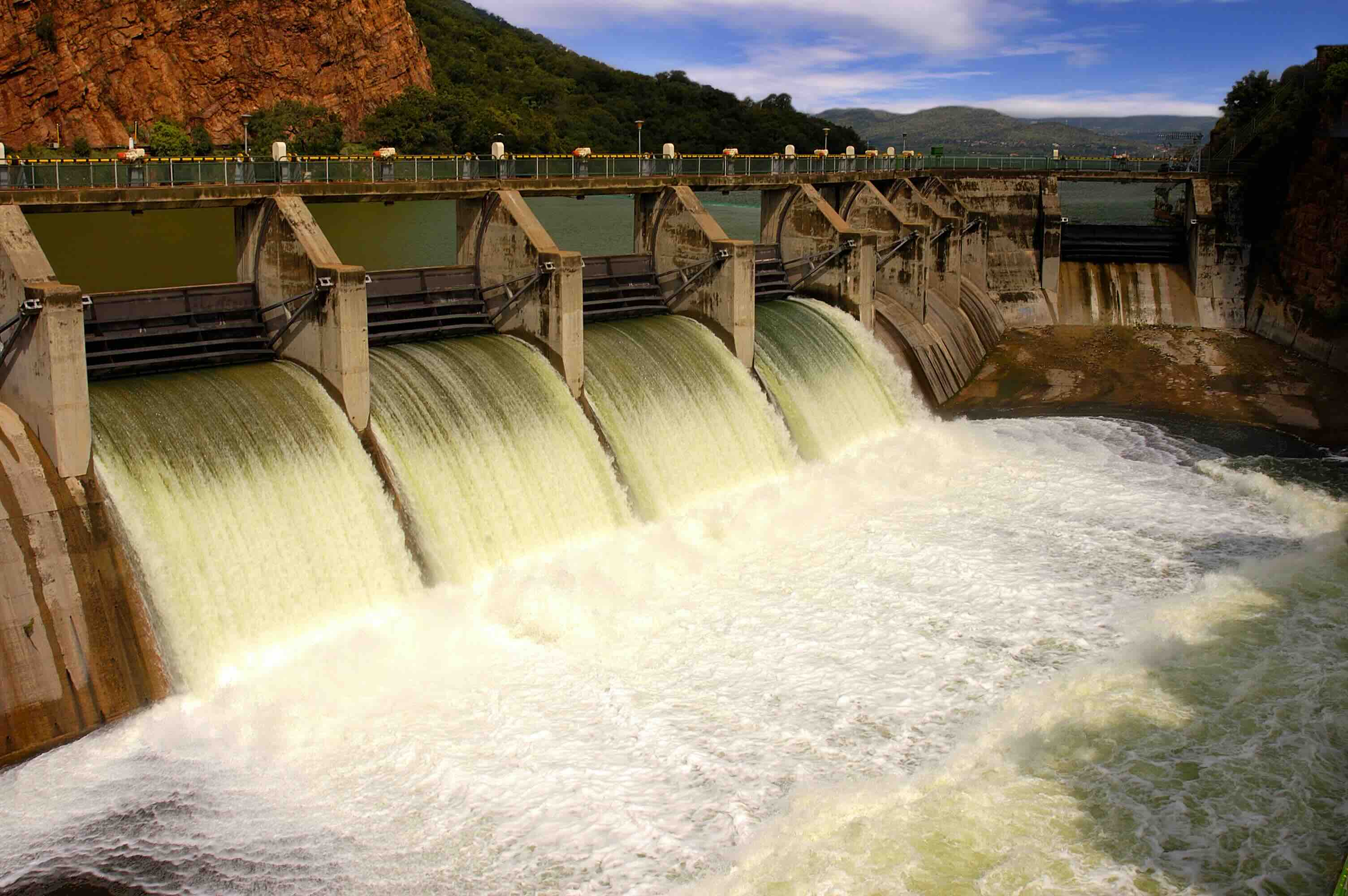

Building & Construction
What Effect Would The Construction Of Dams On Major River Systems Have On The Coastal Environment
Modified: January 19, 2024
Discover how the building-construction of dams on major river systems affects the coastal environment, causing significant ecological changes and potential adverse impacts. Gain insights now!
(Many of the links in this article redirect to a specific reviewed product. Your purchase of these products through affiliate links helps to generate commission for Storables.com, at no extra cost. Learn more)
Abstract
The construction of dams on major river systems can have significant impacts on the coastal environment. This article focuses on the various environmental effects that such construction can cause, including changes in river flow and water quality, disruption of sediment transport, alteration of fish migration patterns, loss of habitat and biodiversity, and effects on coastal erosion and sedimentation. It also discusses mitigation measures that can be implemented to minimize these impacts, such as environmental impact assessment and monitoring programs, optimal dam operations and reservoir management, sediment management strategies, fish passage facilities and restoration efforts, as well as habitat restoration and conservation initiatives. By understanding and addressing these issues, we can strike a balance between harnessing the benefits of dam construction for water supply, energy generation, and flood control, while minimizing the negative consequences on the delicate coastal ecosystem.
Key Takeaways:
- Dam construction on major river systems can disrupt sediment transport, alter fish migration patterns, and impact coastal erosion. Implementing sediment management and fish passage facilities can mitigate these effects and support the resilience of coastal ecosystems.
- Environmental impact assessment, optimal dam operations, and habitat restoration initiatives are essential for minimizing the negative consequences of dam construction on the delicate coastal environment. Collaboration and adaptive management are crucial for achieving sustainable solutions.
Introduction
The construction of dams on major river systems is a common practice worldwide, driven by the need for water supply, hydroelectric power generation, and flood control. While these projects provide numerous benefits for human societies, they also have significant impacts on the coastal environment. This article explores the effects of dam construction on the coastal ecosystem and discusses various mitigation measures to minimize these impacts.
Understanding the environmental consequences of dam construction is crucial for informed decision-making and sustainable development. The coastal environment, which includes estuaries, deltas, and nearshore regions, is a dynamic and delicate ecosystem that is highly interconnected with river systems. Changes in river flow, sediment transport, and water quality caused by the construction of dams can have far-reaching effects on coastal ecosystems and the services they provide.
This article dives into the key environmental impacts of dam construction on major river systems and their implications for the coastal environment. It highlights the importance of considering ecological factors in dam planning and management to ensure the long-term resilience of coastal ecosystems.
By adopting appropriate mitigation measures, it is possible to minimize the negative effects of dam construction and strike a balance between human needs and ecological sustainability. This article presents several strategies that can be employed to mitigate the impacts, including environmental impact assessment and monitoring programs, reservoir management techniques, sediment management strategies, fish passage facilities and restoration efforts, as well as habitat restoration and conservation initiatives.
By implementing these measures, we can safeguard the health and integrity of coastal ecosystems while continuing to reap the benefits of dam development. The integration of environmental considerations into dam planning and management is essential to ensure a sustainable future for both human societies and the coastal environment.
Background
The construction of dams on major river systems has been an integral part of human civilization for centuries. Dams play a vital role in meeting various societal needs, including water supply, irrigation, hydropower generation, and flood control. These structures create reservoirs by impounding water and regulate the flow of rivers, providing a stable and reliable source of water and energy.
However, the construction of dams has not been without controversy, particularly due to their environmental impacts. Major river systems are the lifeblood of the surrounding ecosystems, and altering their natural flow patterns can have cascading effects on the environment, including the delicate coastal ecosystems.
Coastal environments, which encompass estuaries, deltas, and nearshore regions, are highly complex and dynamic ecosystems. They provide a diverse array of habitats, supporting critical biodiversity and offering numerous ecosystem services, such as nutrient cycling, water purification, and coastal protection. These ecosystems are intricately connected with river systems, as rivers transport sediment, nutrients, and freshwater into the coastal areas.
The construction of dams can disrupt the natural flow of rivers, leading to a decrease in downstream water availability and altered water quality. As rivers carry sediment from upstream to downstream, dam construction can impede the transport of sediment, resulting in downstream erosion and reduced sediment deposition in coastal areas. This can lead to increased coastal erosion, loss of beaches, and the alteration of coastal landforms.
Fish migration patterns are also affected by the construction of dams. Many fish species rely on the natural flow of rivers to migrate between freshwater and marine environments for breeding and feeding. Dams can act as barriers, preventing fish from reaching their spawning grounds or blocking their passage during migration, which can have severe implications for fish populations and the entire food web of the coastal ecosystem.
The loss of habitat and biodiversity is another concern associated with dam construction. Reservoirs created by dams can submerge large areas of land, resulting in the loss of natural habitats and displacement of species. Additionally, changes in water regimes and water quality can negatively impact the survival of many aquatic species, affecting the overall biodiversity and ecological balance of the coastal ecosystem.
Coastal erosion and sedimentation are further consequences of dam construction. The alteration of sediment flow can lead to a deficit or excess of sediment in coastal areas, which directly affects the stability of shorelines, beaches, and coastal habitats. This can result in increased erosion, reduced sediment supply for beach nourishment, and changes in coastal landforms.
Given these concerns, it is essential to implement effective mitigation measures to minimize the impact of dam construction on the coastal environment. This article explores various strategies that can be employed to mitigate these impacts and maintain the ecological integrity of coastal ecosystems.
Environmental Impacts of Dam Construction on Major River Systems
The construction of dams on major river systems can have significant environmental impacts, affecting the delicate balance of ecosystems and altering key ecological processes. Understanding these impacts is crucial for implementing effective mitigation measures and minimizing the negative consequences on both riverine and coastal environments. Here are some of the main environmental impacts associated with dam construction:
-
Changes in river flow and water quality: Dams regulate the flow of rivers by storing water upstream and releasing it in a controlled manner. This alteration of natural flow patterns can result in downstream water shortage, affecting water availability for both human and ecological needs. Furthermore, changes in water quality can occur due to factors such as increased water temperature, reduced oxygen levels, and changes in nutrient concentrations.
-
Disruption of sediment transport: Rivers naturally transport sediment from upstream to downstream, replenishing coastal areas and supporting the formation and maintenance of landforms such as deltas and beaches. Dam construction can impede the natural sediment flow, leading to downstream erosion, reduced sediment deposition, and alterations in the coastal sediment dynamics. This can have significant implications for coastal erosion, loss of beaches, and changes in coastal landforms.
-
Alteration of fish migration patterns: Many fish species rely on the natural flow of rivers to migrate between freshwater and marine environments for breeding, feeding, and survival. Dams can act as barriers, blocking fish passage and disrupting their migration routes. This can lead to a decline in fish populations, affect the overall food web of the coastal ecosystem, and impact the livelihoods of communities dependent on fishing.
-
Loss of habitat and biodiversity: The creation of reservoirs behind dams can submerge large areas of land, resulting in the loss of natural habitats and displacement of plant and animal species. Additionally, changes in water regimes and water quality can negatively impact the survival and reproduction of many aquatic species, leading to a loss of biodiversity and ecological imbalance in both riverine and coastal ecosystems.
-
Effects on coastal erosion and sedimentation: As mentioned earlier, the disrupted sediment flow caused by dam construction can have direct implications for the stability of coastal areas. Changes in sediment supply can lead to increased erosion, reduced sediment availability for beach nourishment, and alterations in coastal landforms. These impacts can have significant consequences for coastal communities, infrastructure, and ecosystems.
Understanding these environmental impacts is crucial for developing effective mitigation strategies that can minimize the negative consequences of dam construction on major river systems and the associated coastal ecosystems. By implementing appropriate measures, it is possible to strike a balance between harnessing the benefits of dams and maintaining the health and integrity of riverine and coastal environments.
Changes in River Flow and Water Quality
One of the primary environmental impacts of dam construction on major river systems is the alteration of river flow and water quality. Dams regulate the release of water, which can significantly impact downstream ecosystems and water availability for human and ecological needs.
When a dam is constructed, water is impounded upstream, creating a reservoir. The controlled release of water from the reservoir can result in changes in the natural flow patterns of the river downstream. This altered flow regime can have far-reaching effects on both riverine and coastal ecosystems.
Downstream of the dam, there is often a decrease in the amount of water available due to reduced flow. This can lead to water scarcity for communities, agriculture, and industries that rely on the river system. It can also have ecological consequences, affecting the survival of aquatic organisms that depend on a certain flow regime for feeding, breeding, and other life processes.
Furthermore, the changes in water flow caused by dams can result in changes in water quality. The reduced flow downstream can lead to increased water temperature and reduced dissolved oxygen levels. These changes can have adverse effects on aquatic organisms, particularly fish and other cold-water species that are sensitive to temperature fluctuations and require well-oxygenated water for survival.
Additionally, the construction of dams can alter the nutrient dynamics of the river system. Nutrients, such as nitrogen and phosphorus, are essential for supporting the growth of aquatic plants and the entire food web. Changes in water flow can disrupt the natural transport and distribution of nutrients, leading to imbalances in the ecosystem and potential eutrophication or nutrient pollution in downstream aquatic habitats.
The impacts on river flow and water quality extend beyond the dam area and can potentially affect the coastal environment as well. The reduced flow and changes in water quality can influence the dynamics of estuaries and deltas, which are critical habitats for many species and serve as important nurseries and feeding grounds.
To mitigate the effects on river flow and water quality, various measures can be implemented. These include carefully managing dam operations to mimic natural flow patterns as much as possible, releasing water in a manner that mimics natural flow regimes, and establishing water management agreements that prioritize ecological needs downstream. Additionally, implementing water treatment systems and technologies can help improve water quality and reduce the potential for downstream pollution.
By understanding the impacts of dam construction on river flow and water quality and implementing appropriate mitigation measures, we can strive for a balance between meeting water supply and energy needs while safeguarding the health and integrity of riverine and coastal ecosystems.
Read more: What Does HVAC Mean In Construction
Disruption of Sediment Transport
Another significant environmental impact of dam construction on major river systems is the disruption of sediment transport. Sediment, composed of sand, silt, and clay particles, plays a crucial role in shaping river channels, replenishing coastal areas, and maintaining the overall health of ecosystems.
When a dam is built, the impounded water behind the dam creates a reservoir, which traps sediment that would normally be transported downstream by the river. As a result, the natural sediment transport is disrupted, leading to downstream erosion and decreased sediment deposition in coastal areas.
The reduction in sediment downstream can have significant implications for the stability and sustainability of coastal ecosystems. Sediment serves as a building block for the formation and maintenance of landforms such as deltas, beaches, and barrier islands. These landforms provide vital habitats for numerous plant and animal species, protect coastal areas from erosion, and act as natural buffers against storms and tidal forces.
Without the regular supply of sediment from upstream, coastal erosion can intensify, leading to the loss of beaches and land along the coastline. This erosion can have detrimental effects on coastal communities, infrastructure, and tourism, while also impacting the natural habitats and species that depend on these coastal landforms.
Furthermore, the disruption of sediment transport can affect the balance of sediment deposition and erosion in estuaries and nearshore areas. These coastal habitats rely on a delicate equilibrium between sediment input and removal, as they serve as vital ecosystems and breeding grounds for a diverse array of marine species.
To mitigate the disruption of sediment transport caused by dam construction, several measures can be implemented. Sediment management strategies, such as controlled releases of water from the reservoir to mimic natural sediment flows, can help maintain the balance between sediment deposition and erosion downstream. Additionally, sediment bypass systems or sediment flushing operations can be employed to release accumulated sediment from the reservoir periodically.
Monitoring sediment transport and deposition patterns is also crucial for understanding the long-term impacts of dam construction. Environmental impact assessment programs can help in evaluating the effects on sediment dynamics and informing adaptive management strategies to mitigate these impacts.
By implementing effective sediment management strategies and closely monitoring sediment transport dynamics, it is possible to minimize the disruption of sediment flow and maintain the integrity of coastal ecosystems. This ensures the sustainability of coastal landforms, protects against erosion, and supports the biodiversity and ecosystem services that these habitats provide.
Alteration of Fish Migration Patterns
The construction of dams on major river systems can have a significant impact on the migration patterns of fish species. Many fish species rely on the natural flow of rivers to migrate between freshwater and marine environments for reproduction, feeding, and survival. Dams can act as barriers, obstructing the natural migration routes and disrupting the life cycles of these fish.
Fish migration is a vital process that ensures the sustainability of fish populations and supports the overall health and functioning of river and coastal ecosystems. The migration of fish enables them to access important habitats for breeding or spawning, find food sources in different parts of the river system, and complete their life cycle.
When dams are constructed, they can physically prevent fish from reaching their preferred habitats upstream. This is particularly problematic for anadromous fish species, such as salmon and eels, which migrate from the ocean to freshwater rivers to spawn. These fish rely on uninterrupted access to their upstream spawning grounds, and dams can pose a significant obstacle.
The alteration of fish migration patterns can have wide-ranging ecological consequences. It can lead to the decline of fish populations, affecting not only the species directly impacted by the dams but also other organisms in the food web that depend on those fish for food. Additionally, the loss of migratory fish can have socioeconomic implications, as many communities rely on these fish for food, cultural practices, and economic activities such as commercial and recreational fishing.
To address the alteration of fish migration patterns caused by dam construction, various measures can be implemented. Fish passage facilities, such as fish ladders, fish lifts, or fish locks, can be designed and installed to enable fish to bypass the dam and access their upstream habitats.
These structures provide a series of steps or channels that fish can navigate to overcome the physical barriers of the dam. By recreating natural flow conditions and providing fish-friendly passage, these facilities help maintain the connectivity of river systems and support the natural migration patterns of fish.
Furthermore, restoration efforts focused on habitat enhancement and the creation of fish spawning grounds can also help mitigate the impacts on fish migration. Restoring natural river channels, removing barriers, and implementing habitat enhancement projects upstream and downstream of the dam can provide alternative habitats and improve the chances of successful fish migration.
Collaborative efforts between stakeholders, including dam operators, fisheries agencies, and conservation organizations, are essential for the successful implementation of fish passage facilities and restoration initiatives. These efforts can help ensure the long-term sustainability of fish populations, preserve the ecological integrity of river and coastal environments, and support the cultural and socioeconomic values associated with migratory fish.
Loss of Habitat and Biodiversity
The construction of dams on major river systems can result in the loss and alteration of natural habitats, leading to a decrease in biodiversity. Dams create reservoirs that submerge large areas of land, including forests, wetlands, and other valuable ecosystems.
The flooding caused by dam construction can result in the loss of terrestrial habitats, displacing many plant and animal species that depend on these habitats for survival. The inundated areas are often transformed into open water or shallow reservoir ecosystems, which may support different species composition and ecological functions compared to the original habitats.
Furthermore, the changes in water regimes and water quality caused by dams can also impact aquatic habitats. The impoundment of water can lead to the alteration of natural flow patterns, reducing the availability of suitable habitats for aquatic species. Changes in water quality, such as increased turbidity or changes in nutrient concentrations, can negatively impact the survival and reproduction of aquatic plants and animals.
The loss of habitat and changes in ecological conditions can result in a decline in biodiversity. Species that are unable to adapt to the new conditions or find suitable alternative habitats may suffer population reductions or even local extinctions. This loss of biodiversity can have cascading effects on the overall functioning of the ecosystem and impact other species that depend on those lost or altered habitats.
The loss of habitat and biodiversity caused by dam construction can have significant ecological consequences. It disrupts the natural balance of ecosystems, reduces ecosystem resilience, and can lead to changes in nutrient cycling, energy flow, and trophic interactions.
To mitigate the impacts on habitat and biodiversity, proactive measures can be taken. These include habitat restoration initiatives, which involve re-creating or enhancing habitats that have been lost or altered due to dam construction.
For example, in the case of terrestrial habitats, reforestation efforts can be undertaken to restore forests that have been cleared or flooded. Wetland restoration projects can be implemented to recreate or enhance these critical ecosystems that provide valuable wildlife habitats and perform important ecological functions, such as water purification and flood control.
In aquatic habitats, measures can be taken to enhance the habitat complexity, such as constructing artificial structures like fish spawning beds or underwater vegetation. These efforts can help replace lost functions of natural habitats and support the recovery and survival of various aquatic species.
Additionally, establishing protected areas and conservation zones both upstream and downstream of dams can help safeguard important habitats and promote the conservation of threatened species. By designating these areas, it is possible to preserve key habitats and mitigate the impacts of dam construction on biodiversity.
Collaboration between government agencies, conservation organizations, local communities, and dam operators is crucial for the success of habitat restoration and conservation initiatives. By ensuring the preservation and restoration of habitats, we can help maintain biodiversity, support ecosystems’ resilience, and contribute to the long-term sustainability of both riverine and coastal environments.
Effects on Coastal Erosion and Sedimentation
The construction of dams on major river systems can have significant effects on coastal erosion and sedimentation processes. When a dam is built, it disrupts the natural flow of sediment from rivers to coastal areas, leading to alterations in coastal landforms and erosion patterns.
Sediment, composed of sand, silt, and clay particles, plays a crucial role in the formation and maintenance of coastal landforms such as beaches, barrier islands, and estuaries. It acts as a natural buffer against erosion, supports beach nourishment, and provides habitats for various coastal species.
However, when dams are constructed, the impounded water behind the dam traps sediment that would typically be transported downstream by the river. As a result, the natural supply of sediment to coastal areas decreases, leading to increased erosion and loss of sediment along the coast.
Coastal erosion can intensify when the sediment input from rivers is reduced. Without a regular supply of sediment, beaches can erode, shorelines can retreat, and coastal landforms can be degraded. This can have detrimental effects on coastal communities, infrastructure, and ecosystems.
Additionally, the altered sediment flow caused by dam construction can result in changes to the overall sediment transport dynamics along the coast. Sediment that would normally be delivered to specific coastal areas may be redistributed or deposited elsewhere, leading to changes in coastal landforms and sedimentation patterns.
Coastal erosion and sediment deposition are natural processes that form and reshape coastlines. However, the disruption of sediment transport caused by dams can upset this delicate balance and negatively impact the stability of coastal areas.
To mitigate the effects of dam construction on coastal erosion and sedimentation, several measures can be implemented. Sediment management strategies can involve controlled releases of water from the reservoir to simulate natural sediment flows and maintain sediment supply to downstream areas.
Additionally, sediment bypass systems or sediment flushing operations can be employed to periodically release accumulated sediment from the reservoir and ensure an adequate supply to coastal areas. This helps sustain important sediment sources for beach nourishment and supports the natural dynamics of coastal landforms.
Monitoring and studying sediment transport patterns and coastal erosion processes are vital for understanding the long-term impacts of dam construction. Implementing environmental impact assessment programs can inform management strategies and adaptive measures to address erosion concerns and minimize the effects on coastal habitats and communities.
By implementing effective sediment management strategies, monitoring sediment transport dynamics, and adopting adaptive coastal management approaches, it is possible to mitigate the impacts of dam construction on coastal erosion and sedimentation. This helps preserve the stability of coastal areas, protect coastal communities and their infrastructure, and safeguard the vital habitats and ecological services provided by coastal ecosystems.
The construction of dams on major river systems can have a significant impact on the coastal environment by altering the flow of sediment and nutrients, which can affect coastal erosion, water quality, and marine habitats.
Read more: What Education Do Construction Painters Have
Mitigation Measures to Minimize the Impact on the Coastal Environment
To minimize the environmental impact of dam construction on the coastal environment, various mitigation measures can be implemented. These measures aim to mitigate the negative consequences of dam operations and promote the long-term sustainability of both riverine and coastal ecosystems. Here are some key strategies:
-
Environmental impact assessment and monitoring programs: Conducting thorough environmental impact assessments before dam construction and implementing robust monitoring programs are essential. These assessments evaluate the potential impacts on the coastal environment, identify vulnerable areas, and guide decision-making processes. Regular monitoring allows for ongoing evaluation of impacts and ensures that mitigation measures are effective.
-
Optimal dam operations and reservoir management: Managing dams and reservoirs in a way that mimics natural flow patterns can help mitigate the impact on the coastal environment. By releasing water in a manner that approximates natural flow regimes, the downstream water availability and sediment transport can be better maintained. Optimizing dam operations and reservoir management can reduce the negative effects on water flow, sediment dynamics, and coastal ecosystems.
-
Sediment management strategies: Implementing sediment management strategies is crucial for minimizing the disruption caused by dam construction. Sediment bypass systems, sediment flushing operations, and selective withdrawal structures can be employed to release accumulated sediment from the reservoir and maintain sediment supply to downstream areas. These measures help sustain the natural sediment balance of coastal zones and reduce the impacts of sediment deprivation on erosion and habitat loss.
-
Fish passage facilities and restoration efforts: Installing fish passage facilities, such as fish ladders or fish lifts, at dams can help restore fish migration routes and reduce the impact on fish populations. These structures provide alternatives for fish to bypass the dam, enabling them to reach their spawning grounds and maintain their life cycles. Additionally, habitat restoration efforts should focus on creating or enhancing habitats for fish and other aquatic species affected by dam construction.
-
Habitat restoration and conservation initiatives: To compensate for the loss of natural habitats caused by dam construction, habitat restoration initiatives should be implemented. These efforts involve rehabilitating or creating new habitats in the affected areas. Reforestation projects, wetland restoration, and creation of artificial reefs can help restore or replace lost ecological functions and promote biodiversity conservation in the coastal environment.
Collaboration among government agencies, dam operators, scientists, local communities, and conservation organizations is crucial for the successful implementation of these mitigation measures. By working together, it is possible to minimize the impacts of dam construction on the coastal environment and strike a balance between human needs and ecological sustainability.
Adopting these mitigation measures ensures that the benefits of dam construction, such as water supply and energy generation, can be realized while safeguarding the health, integrity, and resilience of the interconnected riverine and coastal ecosystems.
Environmental Impact Assessment and Monitoring Programs
Environmental impact assessment (EIA) and monitoring programs are essential tools in minimizing the impact of dam construction on the coastal environment. These measures enable comprehensive evaluation, identification, and understanding of potential environmental risks and allow for the implementation of appropriate mitigation strategies.
Prior to the construction of a dam, an in-depth environmental impact assessment is conducted. This assessment identifies and evaluates the potential impacts on the coastal environment, including the effects on water flow, sediment transport, fish migration, habitats, and biodiversity. This process involves the collection and analysis of data, stakeholder consultations, and the assessment of alternative designs and management options.
The EIA process ensures that the potential impacts are thoroughly evaluated, and allows decision-makers to consider the environmental, economic, and social factors associated with dam construction. It provides a foundation for the development and implementation of effective mitigation measures.
Monitoring programs are also crucial components of the mitigation strategy. These programs involve the continuous collection of data on various environmental parameters, such as water quality, sediment transport, fish populations, and habitat conditions.
Monitoring programs enable the assessment of the actual impacts of dam construction on the coastal environment. They provide valuable data that can be used to evaluate the effectiveness of mitigation measures, identify emerging issues, and guide adaptive management strategies.
The data collected through monitoring programs help to build a comprehensive understanding of the long-term environmental changes and trends caused by the dam. This information is critical for decision-makers, allowing them to make informed decisions about dam operations, reservoir management, and possible adjustments to minimize the negative impacts on coastal ecosystems.
Additionally, monitoring programs enhance transparency and accountability by providing stakeholders with access to reliable and up-to-date information on the status of the coastal environment. This facilitates communication and collaboration among government agencies, dam operators, scientists, local communities, and conservation organizations.
By integrating robust environmental impact assessments and continuous monitoring programs into dam planning and operations, it becomes possible to identify potential risks and develop effective mitigation measures. This helps to minimize the impact on the coastal environment and ensures that the long-term sustainability of both riverine and coastal ecosystems is taken into account.
Commitment and collaboration among all stakeholders are vital for the successful implementation of environmental impact assessment and monitoring programs. By working together, we can ensure that dam construction proceeds in an environmentally responsible manner, balancing the needs of society while protecting the health and integrity of the coastal environment.
Optimal Dam Operations and Reservoir Management
Optimal dam operations and reservoir management are key components of mitigating the impact of dam construction on the coastal environment. By managing dams in a way that mimics natural flow patterns and considering the needs of downstream ecosystems, it is possible to minimize negative impacts and maintain the ecological integrity of both riverine and coastal ecosystems.
One important aspect of optimal dam operations is the release of water from the reservoir. By releasing water in a manner that approximates natural flow regimes, the downstream water availability and sediment transport can be better maintained. This helps to sustain the natural functioning of the river and coastal systems.
Understanding the hydrological and ecological needs of the downstream environment is crucial for determining the optimal water release patterns. By considering factors such as seasonal flow patterns, fish migration, and the health of downstream habitats, it becomes possible to manage dam operations in a way that minimizes the disruption to the coastal environment.
Reservoir management is another essential component of minimizing the impact on the coastal environment. It involves managing the reservoir water levels and storage capacities in a manner that balances the water supply, energy generation, and downstream ecosystem needs.
Adjusting reservoir levels can help regulate the flow of water downstream, preventing excessive fluctuations and sudden releases that could disrupt the stability of downstream habitats and ecosystems.
Reservoir management strategies can also include the controlled release of sediment from the reservoir to maintain the natural sediment balance of coastal zones. This helps to mitigate erosion and beach loss by ensuring an adequate supply of sediment to coastal areas.
Integrated water resources management approaches, which consider the needs of both the reservoir and downstream environments, can result in a more sustainable and environmentally-friendly operation of dams. These approaches involve collaborative decision-making processes that include input from various stakeholders, such as government agencies, dam operators, local communities, and environmental organizations.
Regular communication and coordination among stakeholders are vital for optimal dam operations and reservoir management. This includes sharing data, conducting joint assessments, and adapting management strategies based on monitoring results and changing environmental conditions.
By adopting optimal dam operations and reservoir management practices, it is possible to minimize the impact of dam construction on the coastal environment. This helps to maintain the natural flow and sediment dynamics of rivers, reduce erosion rates, and support the health and integrity of coastal ecosystems.
The adoption of these practices requires a commitment to sustainable and environmentally-conscious dam planning and operations. By recognizing the need for balance between human needs and ecological sustainability, we can ensure that the benefits of dams are realized while mitigating their negative impacts on the coastal environment.
Sediment Management Strategies
Sediment management strategies are crucial for minimizing the impact of dam construction on the coastal environment. These strategies aim to mitigate the disruption of sediment transport caused by dams, maintain natural sediment dynamics, and sustain the health and stability of coastal ecosystems.
When dams are constructed, sediment that would typically be transported downstream by the river is trapped behind the dam, leading to a decreased supply of sediment to coastal areas. This reduction in sediment can result in increased coastal erosion, loss of beaches, and alterations in coastal landforms.
To address these issues, various sediment management strategies can be employed:
-
Controlled Releases of Sediment: Implementing controlled releases of sediment from the reservoir can help maintain a more natural sediment balance in the coastal environment. By periodically releasing accumulated sediment in a controlled manner, it is possible to meet the sediment needs of downstream areas and mitigate erosion. This can be achieved through flushing operations, where high flows are released from the reservoir to transport sediment downstream, or through the operation of sediment sluices or outlets to selectively release sediment-laden water.
-
Sediment Bypass Systems: Sediment bypass systems are designed to divert sediment around the dam, allowing it to continue downstream. These systems can include sediment bypass tunnels, channels, or sediment bypass gates. By routing sediment around the reservoir, these systems ensure that a portion of the natural sediment load reaches the coastal zone, helping to maintain important sediment supply for beach nourishment and the stability of coastal landforms.
-
Sediment Flushing and Management: Sediment flushing involves the controlled release of sediment from the reservoir during periods of high flow, mimicking natural sediment transport processes. This helps to maintain the natural sediment balance downstream and reduces the risk of sediment deprivation and associated erosion. Sediment management strategies can also involve sediment trapping mechanisms downstream of the dam, such as sediment retention ponds or basins, which allow for the controlled removal of sediment and reduce its accumulation in the reservoir.
Implementing these sediment management strategies requires close coordination and collaboration between dam operators, water resource managers, and environmental stakeholders. A comprehensive understanding of sediment dynamics, including sediment transport rates, sediment sources, and erosional and depositional patterns, is crucial for effective implementation.
Furthermore, regular monitoring of sediment transport and deposition patterns is essential to evaluate the effectiveness of sediment management strategies and adapt them as needed. This data helps assess the impacts of dam construction on sediment dynamics, identify any changes or trends, and guide adaptive management approaches.
By implementing sediment management strategies, it is possible to mitigate the disruption of sediment transport caused by dam construction and support the stability and health of coastal ecosystems. A balanced approach to sediment management ensures that the natural functioning of rivers and the replenishment of coastal areas with sediment are maintained, limiting erosion and safeguarding the valuable ecological and socio-economic services provided by coastal environments.
Fish Passage Facilities and Restoration Efforts
Fish passage facilities and restoration efforts are crucial mitigation measures to minimize the impact of dam construction on fish migration patterns and support the ecological functioning of river and coastal ecosystems. These measures aim to restore fish access to their natural habitats and promote the long-term sustainability of fish populations.
When dams are constructed, they can act as barriers that prevent fish from reaching their spawning grounds or accessing crucial habitats downstream. This disruption of fish migration patterns can have severe consequences on fish populations, aquatic food webs, and even the livelihoods of communities that depend on fishing activities.
To overcome these barriers, fish passage facilities are designed and installed to provide alternative routes for fish to bypass the dam and reach their desired destinations. These facilities come in various forms, such as fish ladders, fish lifts, fish locks, or even fish-friendly turbines.
Fish ladders are a commonly employed option, consisting of a series of pools or cascades that fish can navigate to progress upstream. These structures create a series of steps that mimic natural stream conditions and enable fish to overcome the physical barriers of the dam.
Fish lifts or fish locks involve the use of tanks or compartments that fish can swim into, and they are then lifted or transported over the dam. This allows them to bypass the dam entirely and continue their journey upstream.
Additionally, fish-friendly turbines incorporate design modifications that minimize the risk of fish injury or mortality during their passage through hydropower turbines. These turbines typically have larger gaps or pressure gradients that reduce the likelihood of fish being entrained or harmed.
Restoration efforts are also essential for mitigating the impact of dam construction on fish populations. These efforts involve restoring or enhancing habitats that have been affected by the dam, such as the creation of side channels, gravel beds, or fish spawning grounds downstream of the dam. By providing suitable habitats for fish, these restoration initiatives help support the recovery and sustainability of fish populations.
Collaborative efforts between government agencies, dam operators, regulatory bodies, and conservation organizations are crucial for the success of fish passage facilities and restoration initiatives. These efforts require ongoing monitoring and assessment to ensure that the facilities are effective in enabling fish passage and that restored habitats support the ecological needs of fish species.
Furthermore, public awareness and education programs can help raise awareness about the importance of fish migration and encourage support for fish passage initiatives. Engaging local communities and stakeholders in the conservation and restoration efforts fosters a sense of ownership and promotes long-term stewardship of fish populations and their habitats.
By implementing fish passage facilities and restoration efforts, we can help mitigate the impacts of dam construction on fish migration patterns and support the resilience of river and coastal ecosystems. These measures ensure the sustainability of fish populations, promote healthy aquatic ecosystems, and maintain the social, cultural, and economic benefits associated with fish and fisheries.
Habitat Restoration and Conservation Initiatives
Habitat restoration and conservation initiatives are vital mitigation measures to minimize the impact of dam construction on the coastal environment. These efforts aim to compensate for the loss of natural habitats caused by the dam and ensure the long-term sustainability of both riverine and coastal ecosystems.
When dams are constructed, large areas of land are often flooded, resulting in the loss of valuable habitats for many plant and animal species. Wetlands, forests, and other ecosystems are submerged, displacing wildlife and disrupting ecological processes.
Habitat restoration initiatives involve rehabilitating or creating new habitats in the affected areas to compensate for the loss. These efforts can include various activities, such as reforestation, wetland restoration, creation of artificial reefs, or habitat enhancement projects.
Reforestation projects involve planting native trees and vegetation in areas where forests have been cleared or flooded by the dam. These restored forests not only provide habitats for a wide range of species but also contribute to carbon sequestration, watershed protection, and the overall health of the ecosystem.
Wetland restoration aims to recreate or enhance these critical ecosystems that provide valuable habitats for wildlife, improve water quality, and help regulate water flow. Rehabilitating and protecting wetlands contribute to biodiversity conservation and provide important ecosystem services, such as water purification and flood control.
Artificial reefs can be deployed in marine or coastal areas to create new habitats for fish, coral, and other marine species. These artificial structures serve as substrates for attachment and provide shelter for various marine organisms, contributing to the restoration of biodiversity and the recovery of impacted ecosystems.
Habitat enhancement projects involve modifying or enhancing existing habitats to make them more suitable for target species. This can include the creation of fish spawning beds, the installation of fish shelters or habitat structures, or the restoration of stream channels and riparian zones.
In addition to habitat restoration, conservation initiatives play a crucial role in mitigating the impact of dam construction. Establishing protected areas and conservation zones both upstream and downstream of the dam can help safeguard important habitats, support the recovery of species, and promote biodiversity conservation in the coastal environment.
Conservation efforts can involve habitat protection, species management, and targeted conservation programs to address the specific conservation needs of threatened or endangered species affected by dam construction. Collaborative partnerships between government agencies, communities, and conservation organizations are key to the success of these initiatives.
By implementing habitat restoration and conservation initiatives, we can minimize the impact of dam construction and support the recovery and resilience of coastal ecosystems. These efforts help to preserve biodiversity, restore ecological processes, and maintain the valuable ecosystem services that coastal habitats provide.
Long-term commitment, adaptive management, and ongoing monitoring are essential to ensure the effectiveness of these initiatives and to drive the ecological recovery and sustainability of both riverine and coastal environments.
By working together, we can achieve a harmonious balance between human development and the health of the natural environment, ensuring a sustainable future for generations to come.
Conclusion
The construction of dams on major river systems brings essential benefits in terms of water supply, energy generation, and flood control. However, these projects also have significant environmental impacts on the coastal environment, which is intricately connected to river systems.
The impact of dam construction on the coastal environment includes changes in river flow and water quality, disruption of sediment transport, alteration of fish migration patterns, loss of habitat and biodiversity, and effects on coastal erosion and sedimentation.
To minimize these impacts, various mitigation measures can be implemented. Environmental impact assessment and monitoring programs guide decision-making processes and provide crucial data for evaluating the effectiveness of mitigation measures. Optimal dam operations and reservoir management mimic natural flow patterns and balance water supply and ecological needs. Sediment management strategies ensure the controlled release of sediment to sustain the balance of coastal areas. Fish passage facilities and restoration efforts help restore fish migration routes and support fish populations. Habitat restoration and conservation initiatives compensate for lost habitats and promote biodiversity conservation in the coastal environment.
Collaboration among government agencies, dam operators, scientists, local communities, and conservation organizations is crucial for the success of these mitigation measures. It requires ongoing monitoring, adaptive management, and public awareness to ensure the long-term sustainability of both riverine and coastal ecosystems.
By implementing these mitigation measures, we can strike a balance between harnessing the benefits of dams and protecting the health and integrity of the coastal environment. It allows us to meet societal needs while safeguarding the invaluable services provided by coastal ecosystems.
The integration of environmental considerations into dam planning, development, and operations is essential for creating sustainable solutions that harmonize human development and ecosystem conservation. By recognizing the interconnectedness of river and coastal ecosystems, we can pave the way for a future where economic progress and ecological resilience go hand in hand.
Ultimately, it is through this collaborative and holistic approach that we can ensure a sustainable and vibrant coastal environment for present and future generations to enjoy and benefit from.
References
1. Cheng, X., & Wu, Z. (2020). Environmental implications of dam construction in rivers: A review. Water, 12(12), 3574.
2. Dudgeon, D., Arthington, A. H., Gessner, M. O., Kawabata, Z. I., Knowler, D. J., Lévêque, C., … & Sullivan, C. A. (2006). Freshwater biodiversity: importance, threats, status and conservation challenges. Biological Reviews, 81(2), 163-182.
3. Kondolf, G. M., Piégay, H., Piegay, H., & Landon, N. (2017). Channel response to dams in alluvial rivers: The nature and significance of downstream effects. Annual Review of Earth and Planetary Sciences, 45, 347-376.
4. Nilsson, C., Reidy, C. A., Dynesius, M., & Revenga, C. (2005). Fragmentation and flow regulation of the world’s large river systems. Science, 308(5720), 405-408.
5. Pandian, A., Raghunathan, A., Thamer, T. A., James, D. B., & Kery, S. P. (2013). Fish passage facilities: design considerations and environmental implications. International Journal of Marine Science, 3(30), 429-440.
6. Scaroni, A. E. (2019). Sustainable sediment management in dam-regulated rivers. Ecological Engineering, 130, 138-153.
7. Schindler, D. E., Hilborn, R., Chasco, B., Boatright, C. P., Quinn, T. P., Rogers, L. A., & Webster, M. S. (2010). Population diversity and the portfolio effect in an exploited species. Nature, 465(7298), 609-612.
8. Wang, L., Ye, X., & Chen, J. (2018). Impacts of dams on river reach hydrological alteration in major international river basins. Journal of Hydrology, 559, 387-394.
9. Zárate-Barrera, R., García-Berthou, E., & Balbuena, J. A. (2017). Damming threat to Amazonian aquatic ecosystems. Conservation Biology, 31(5), 1008-1011.
10. Ziv, G., Baran, E., Nam, S., Rodríguez-Iturbe, I., & Levin, S. A. (2012). Trading-off fish biodiversity, food security, and hydropower in the Mekong River Basin. Proceedings of the National Academy of Sciences, 109(15), 5609-5614.
Frequently Asked Questions about What Effect Would The Construction Of Dams On Major River Systems Have On The Coastal Environment
Was this page helpful?
At Storables.com, we guarantee accurate and reliable information. Our content, validated by Expert Board Contributors, is crafted following stringent Editorial Policies. We're committed to providing you with well-researched, expert-backed insights for all your informational needs.


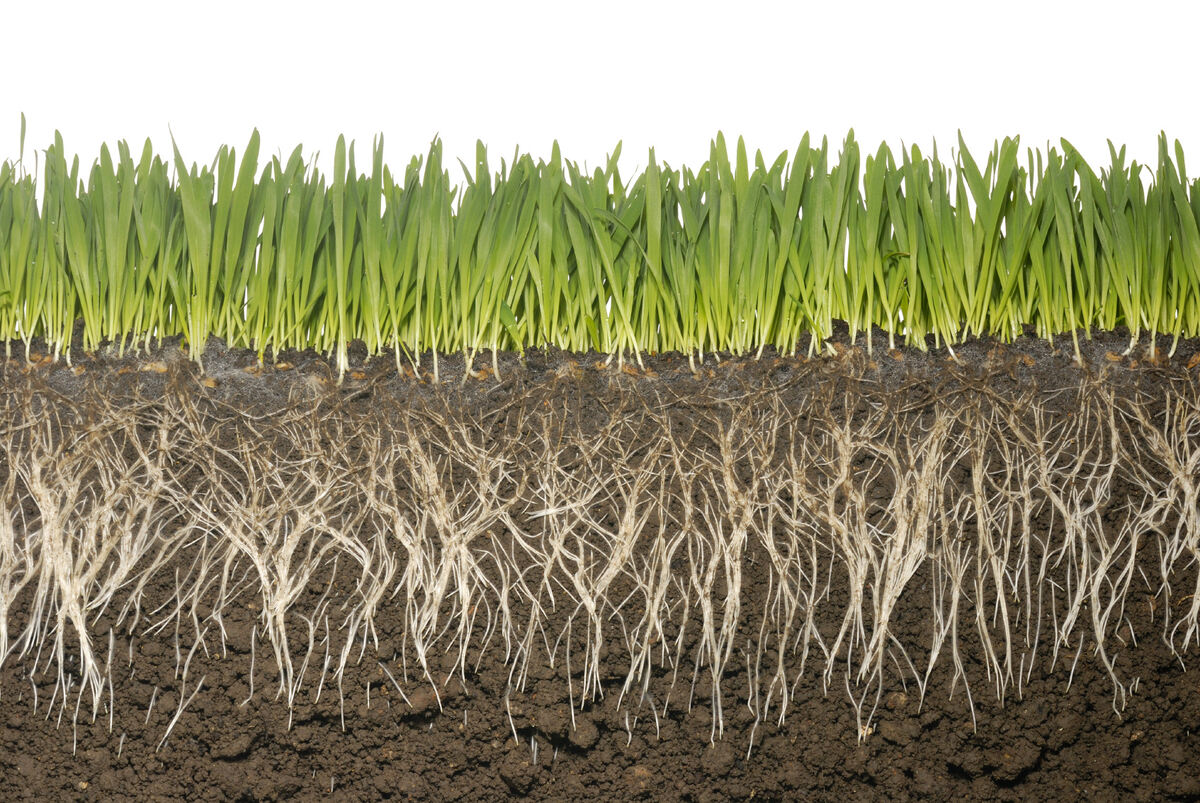


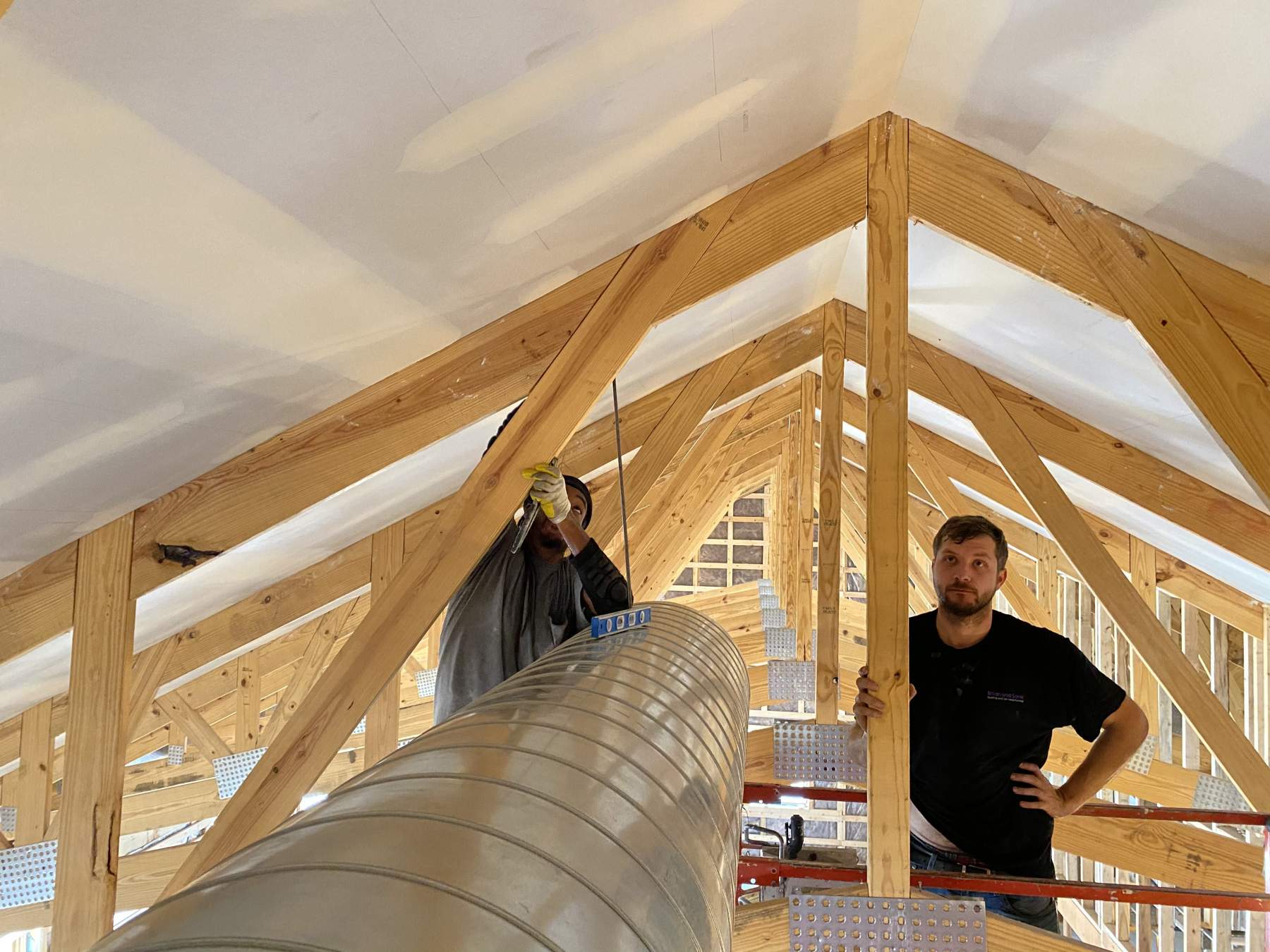

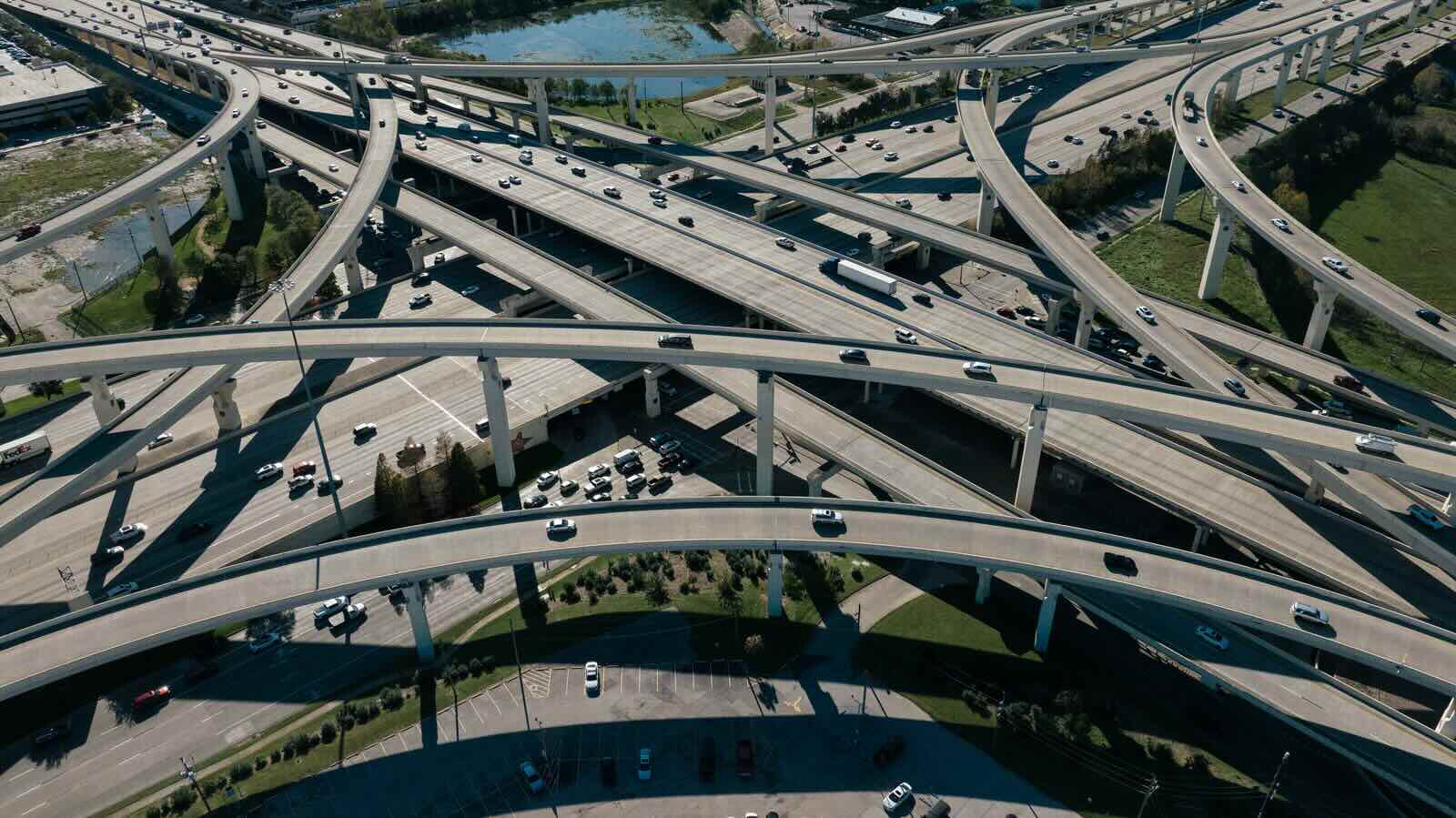



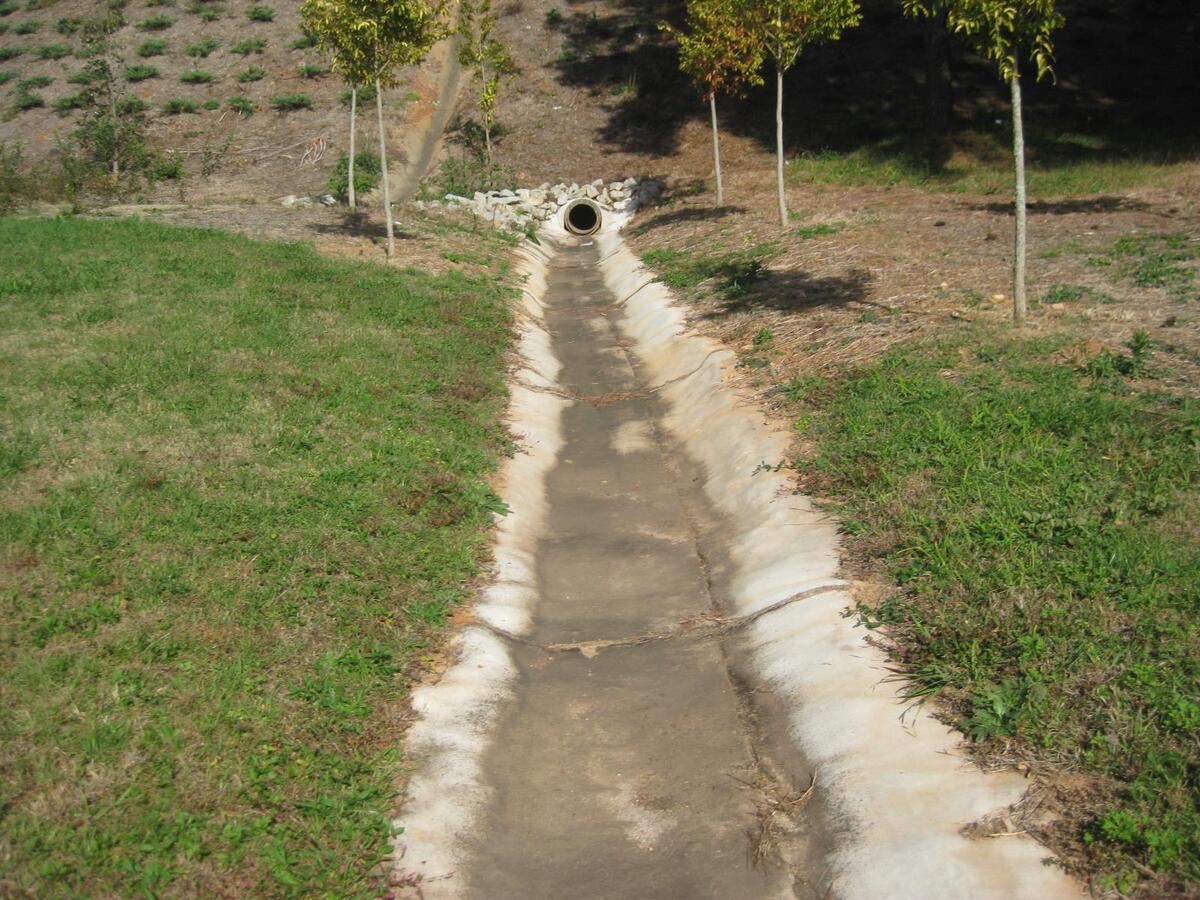

0 thoughts on “What Effect Would The Construction Of Dams On Major River Systems Have On The Coastal Environment”